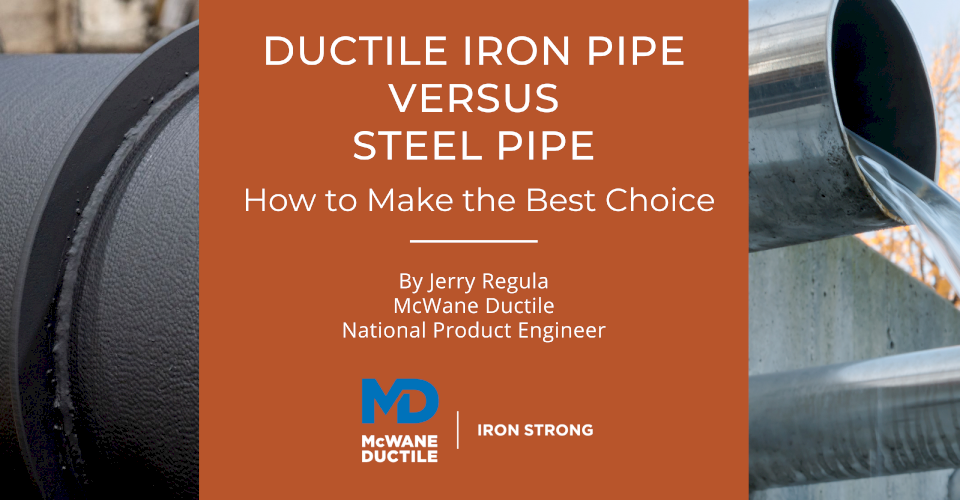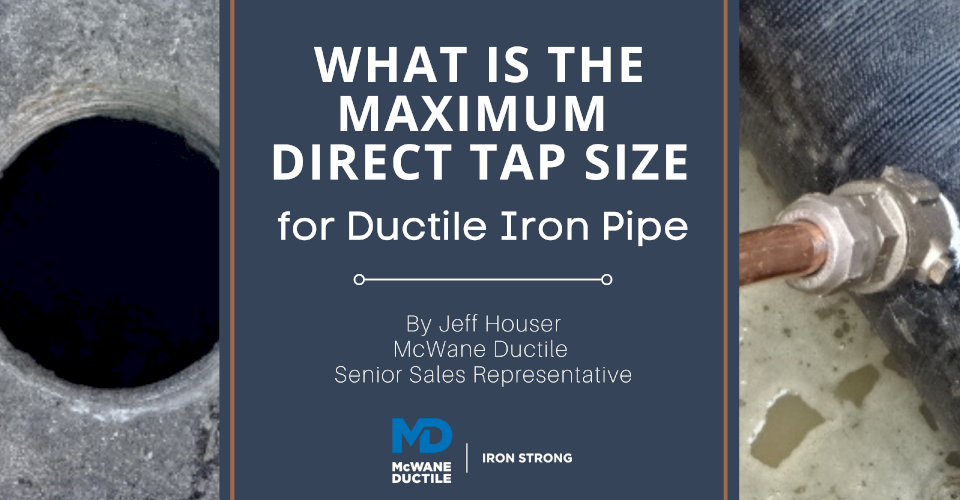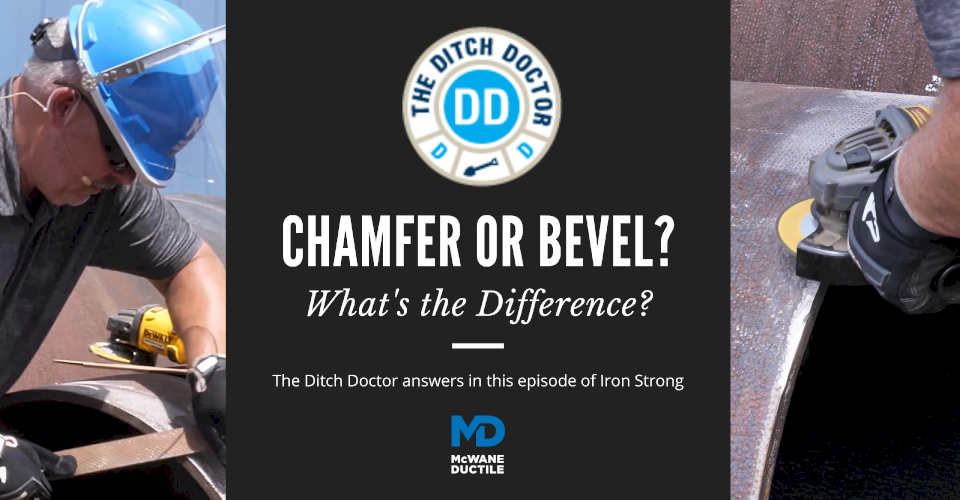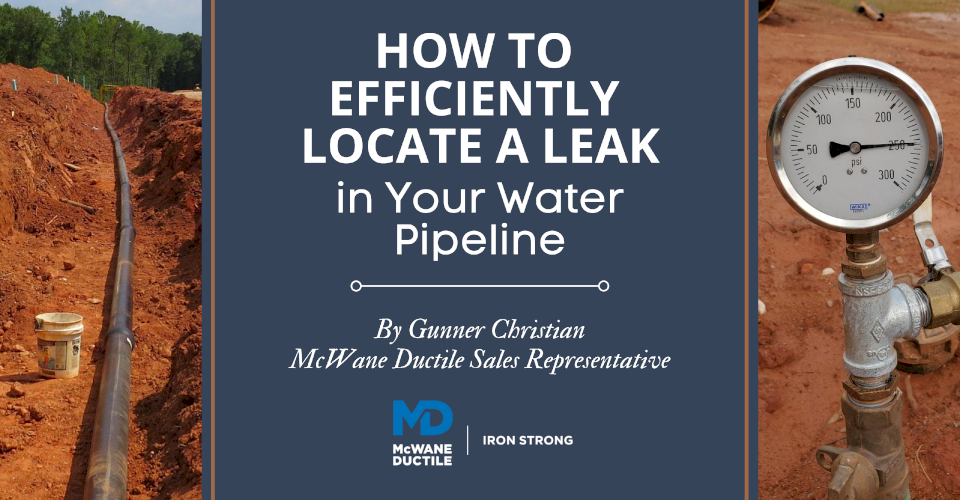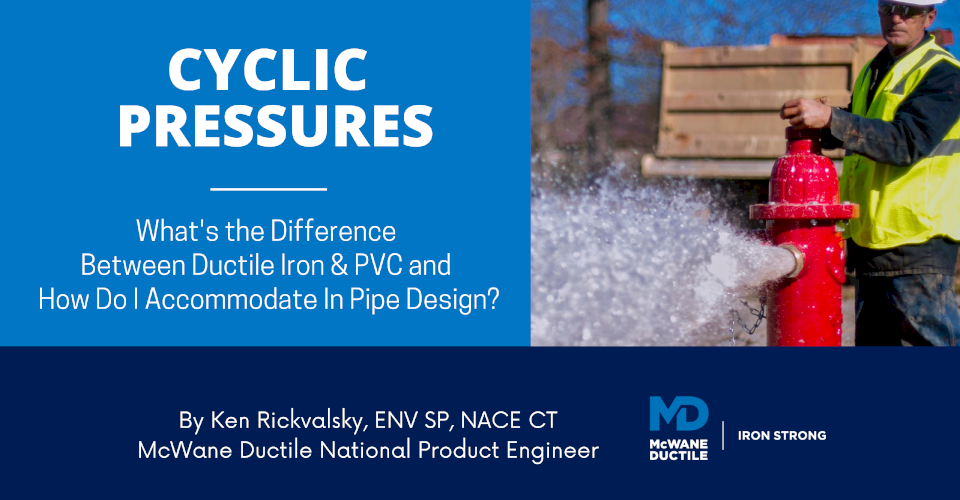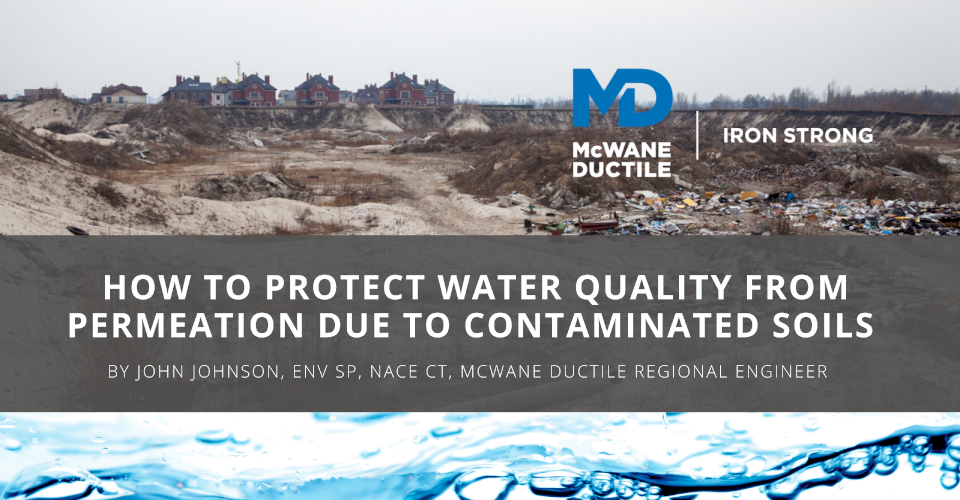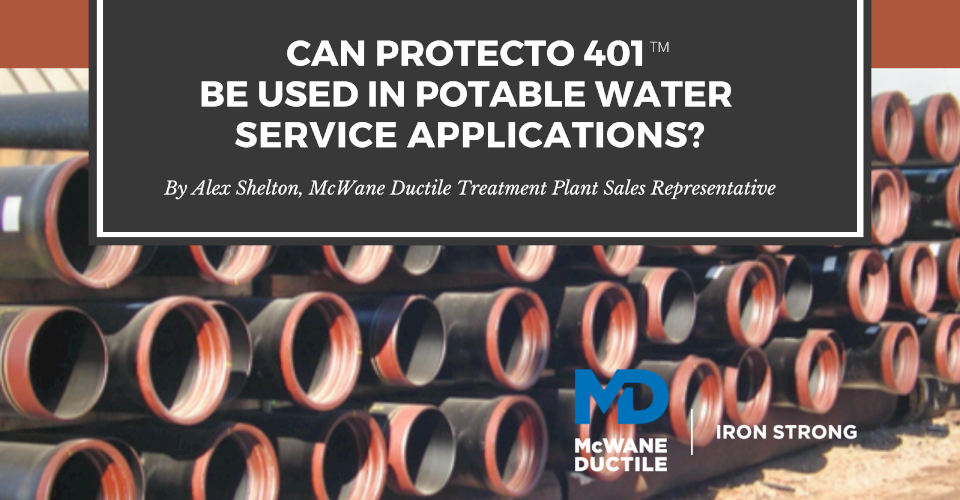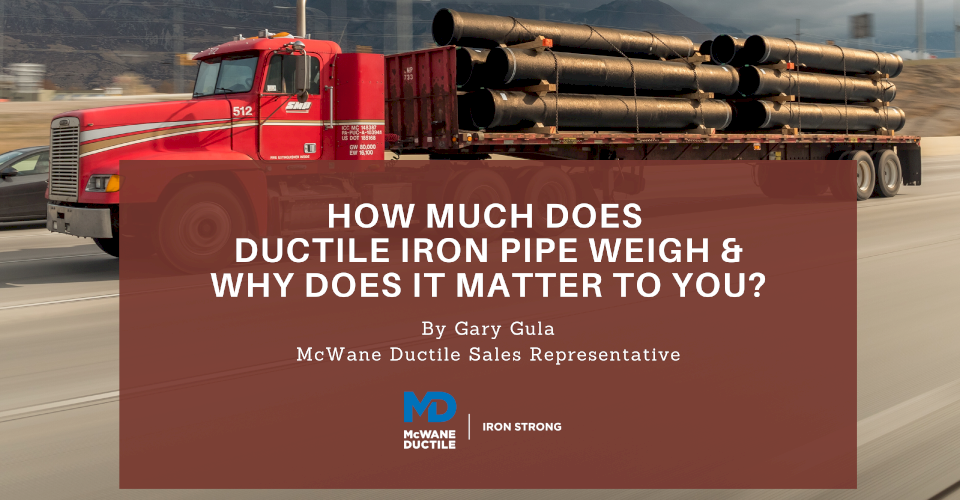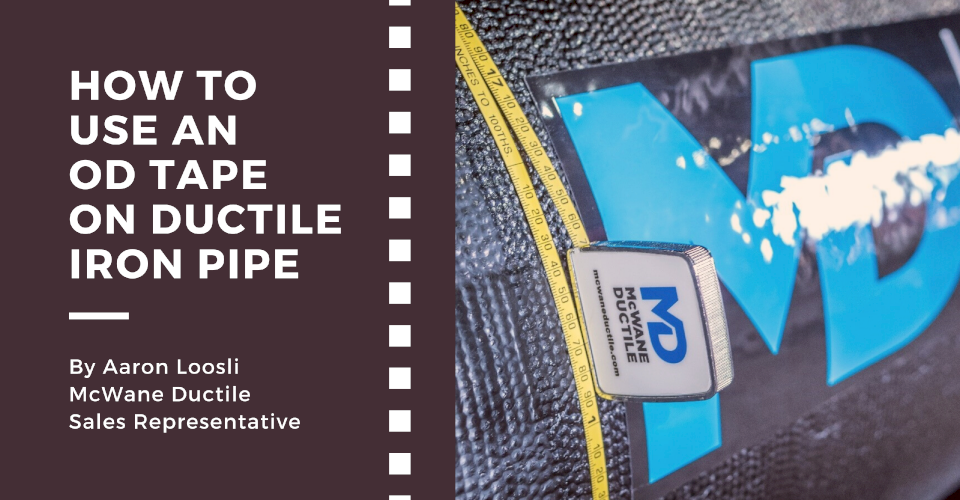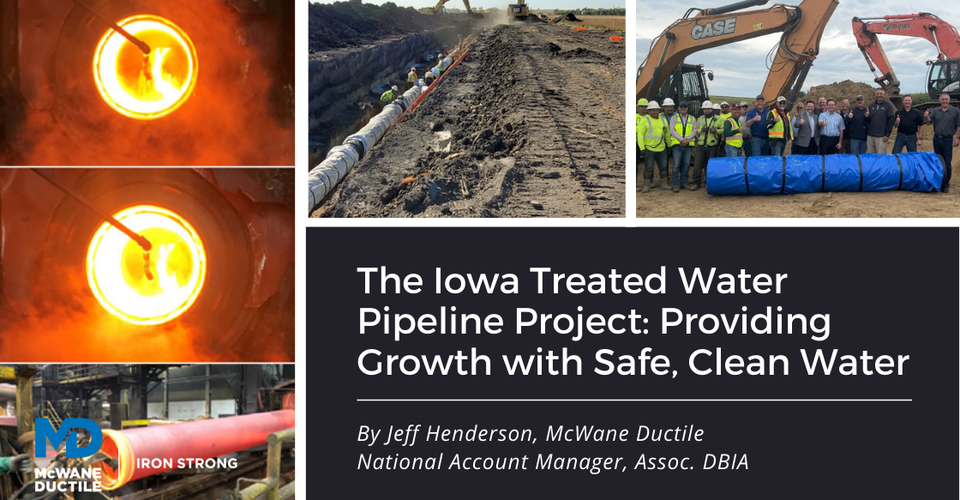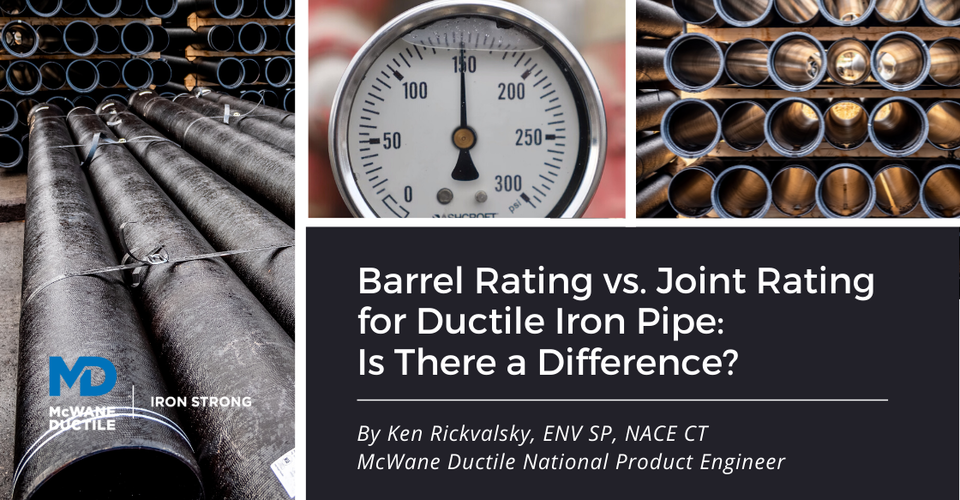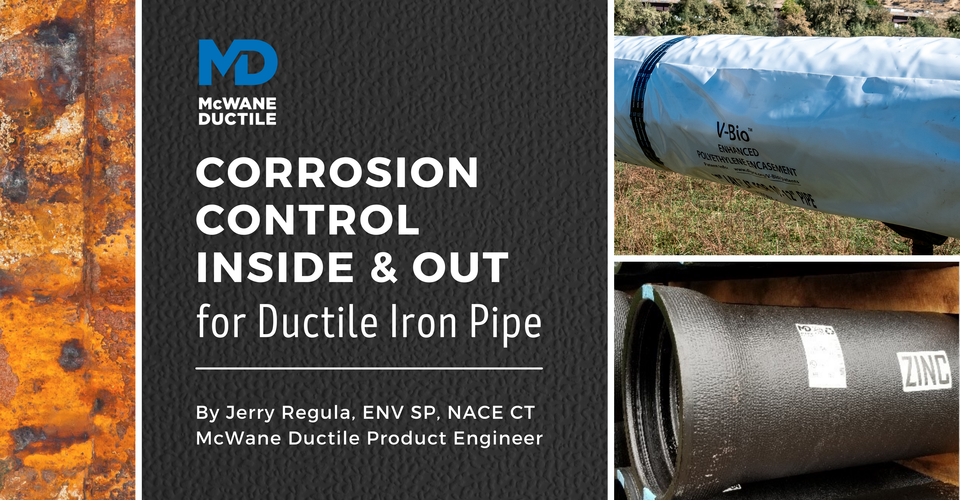-
Ductile Iron Vs. Steel Pipe: How To Make The Best Choice
09/16/2020 In Products TechnicalThere are several factors to consider when choosing the type of pipe to use for your job. This article will focus on of few of those areas of concern as we compare Ductile iron pipe (DI pipe) to its shiny arch-nemesis, steel. I'll be walking through each material's pros and cons as they relate to product design, energy (pumping cost) efficiency, corrosion control, and installation.
-
Handling Ductile Iron Pipe: From Truck to Trench
09/12/2020 In Installation TechnicalAt McWane Ductile, we are proud to manufacture the strongest, most durable, and most flexible piping material available to the waterworks industry. Even with these great attributes, we still take great care when handling Ductile iron pipe (DI pipe). In this Iron Strong Blog, we’ll cover some key tips to safely handling your DI pipe once it arrives at your job site and throughout the construction or your pipeline project.
-
What is the Maximum Direct Tap Size for Ductile Iron Pipe?
09/10/2020 In Installation TechnicalWith Ductile iron pipe (DI pipe), typical service taps can be installed directly into the wall of the pipe, which is called “direct tapping.” The ability to use direct tapping eliminates the need for tapping saddles. And the ease at which DI pipe can be "hot tapped" helps avoid the issue of unhappy consumers because their service and pressure are not impacted by the addition of a new tap. The waterworks community frequently asks us, “How big of a tap will DI pipe allow?” The simple, most conservative response, not having interrogated the user as to their DI pipeline particulars, would be as follows:
-
Chamfer or Beveling Ductile Iron Pipe - What's the Difference
08/26/2020 In Installation TechnicalThere are occasions during field installation of Ductile iron pipe (DI pipe) when a Chamfered edge or a beveled edge may be required. There is typically a sharp edge on any metal pipe after field cutting. This edge is a safety hazard that requires removal. The sharp edge may also damage a gasket during installation, which is an additional reason to remove the sharp edge. Read on to see the differences and why it is essential to have the proper edge on a field-cut DI pipe.
-
How to Efficiently Locate a Leak in Your Water Pipeline
08/05/2020 In Installation TechnicalIn the field, a contractor can become frustrated when attempting to locate the source of a water leak in a buried pipeline. Having a reasoned plan of resolve will save a lot of time, money, and headaches, along with demonstrating a true level of professionalism to outside observers. In this Iron Strong blog, we will examine the patterns of thought, questions to be answered, and the different assessments used when locating a leak.
-
Cyclic Pressures - What's the Difference Between Ductile Iron & PVC and How Do I Accommodate In Pipe Design?
07/25/2020 In Products TechnicalThis entry in the Iron Strong Blog compares the performance of Ductile iron pipe (DI pipe) to Polyvinyl Chloride (PVC) pipe against cyclic pressure variations in piping systems. Cyclic loading, or more accurately, cyclic surges, is a phenomenon where pressures in a pipeline frequently vary due to changes in demand, operating conditions, storage tank levels, treatment plants, and pump starts and shutdowns. Surges can also occur during common field operations such as exercising or flushing fire hydrants or valves within the system, which can drastically change flow parameters, causing surges or water hammers.
-
How to Protect Water Quality from Permeation Due to Contaminated Soils
07/17/2020 In Environmental & Safety TechnicalFor buried pipelines, there can be several soil conditions that adversely affect water quality via permeation. As a waterworks professional, you most likely will ask “Where and when might these harmful conditions be present, or even potentially develop, and what solution is available to best protect my water system from this issue? We will look at several of the more common risks in this article and discuss protective measures that can be utilized. These risks can include contaminated soils from areas in or near older landfills, industrial sites, and abandoned or leaking fuel tanks, to mention a few.
-
Can Protecto 401™ Be Used in Potable Water Service Applications?
07/10/2020 In Products TechnicalAfter being in the water and sewer industry for almost 15 years, I can safely say a question I hear frequently is “Can Protecto 401™ be used in potable water service applications?” And that is exactly what we are going to talk about in this Iron Strong Blog. We all know it when we see it, the pipe with the red bell and spigot. It sticks out like a sore thumb so that it can be noticed without any confusion. But where can it be used and what is its purpose?
-
How Much Does Ductile Iron Pipe Weigh and Why Does It Matter to You?
07/09/2020 In Installation Products TechnicalIf you're like most people, you probably don't sit around thinking about how much Ductile iron pipe (DI pipe) weighs so in this Iron Strong Blog we are going to tell you where to find the weight of the pipe and why it is essential to familiarize yourself with the weight of the pipe.
-
How To Use an OD (Outside Diameter) Tape on Ductile Iron Pipe
06/25/2020 In Installation TechnicalJimmy sends a text to Bill, "I can't get into the virtual meeting." Bill replies, "You need to click on the link I sent you." Jimmy responds "Where is the link?" A frustrated Bill answers, "In the email about the meeting." A confused Jimmy asks, "On my computer? Bill answers again, "Yes! Is your computer on?" Jimmy fumbles to turn on his computer and texts Bill again, "OK, it is now. How do I get to the meeting?" Does this situation sound familiar to you? Have you ever explained something to someone only to realize that they knew less about the subject than you had previously assumed? In this episode of Iron Strong, we'll cover how to use an OD (Outside Diameter) Tape when measuring Ductile iron pipe.
Latest Posts
- The Iowa Treated Water Pipeline Project: Providing Growth with Safe, Clean Water 11/09/2021 In Installation Services
- Hydrotesting on Slopes: The Hills Have PSI! 10/28/2021 In Installation Technical
- Barrel Rating vs. Joint Rating for Ductile Iron Pipe: Is There a Difference? 10/15/2021 In Technical
- Corrosion Control - Inside and Out - for Ductile Iron Pipe 10/08/2021 In Products Technical

